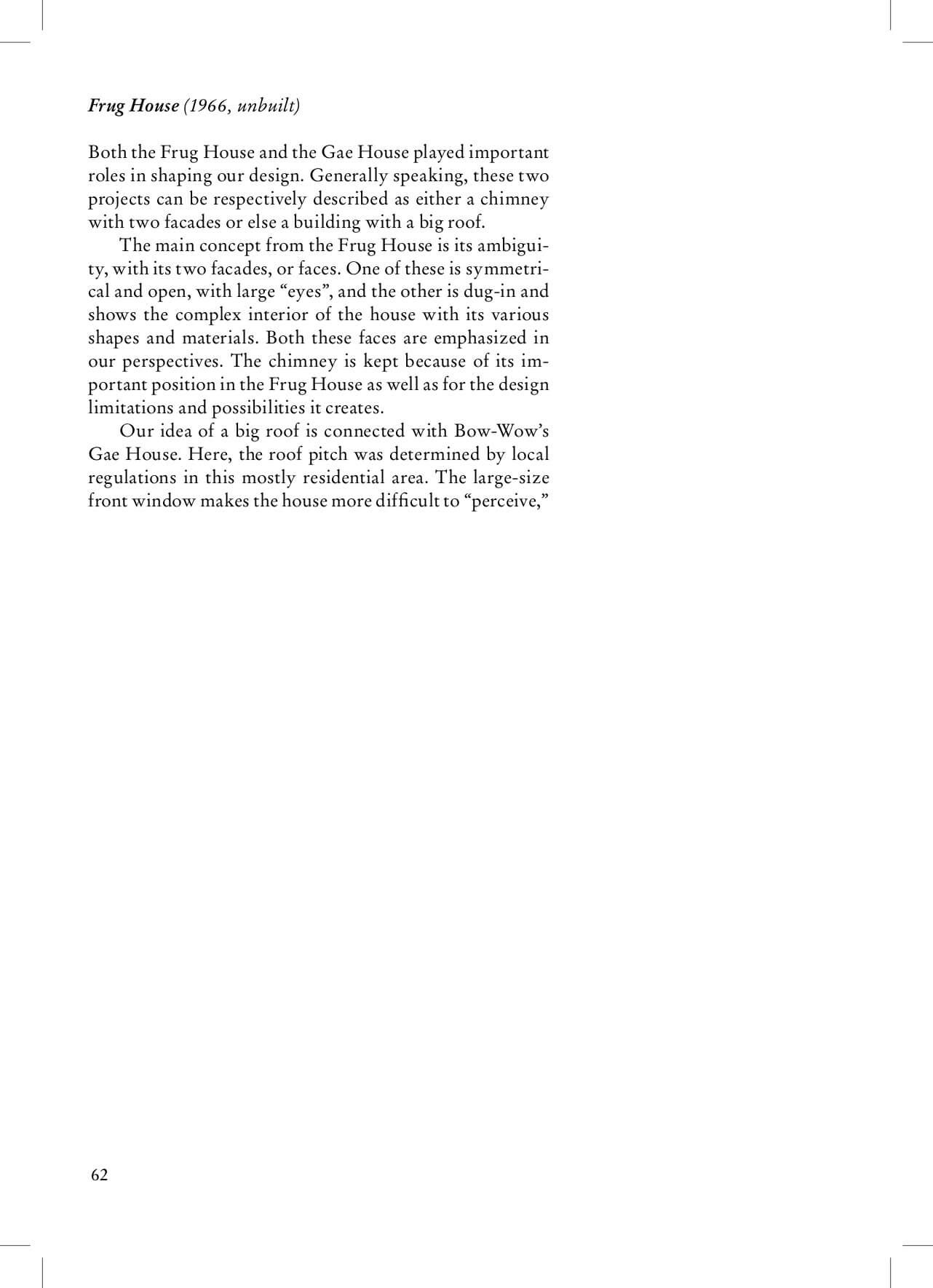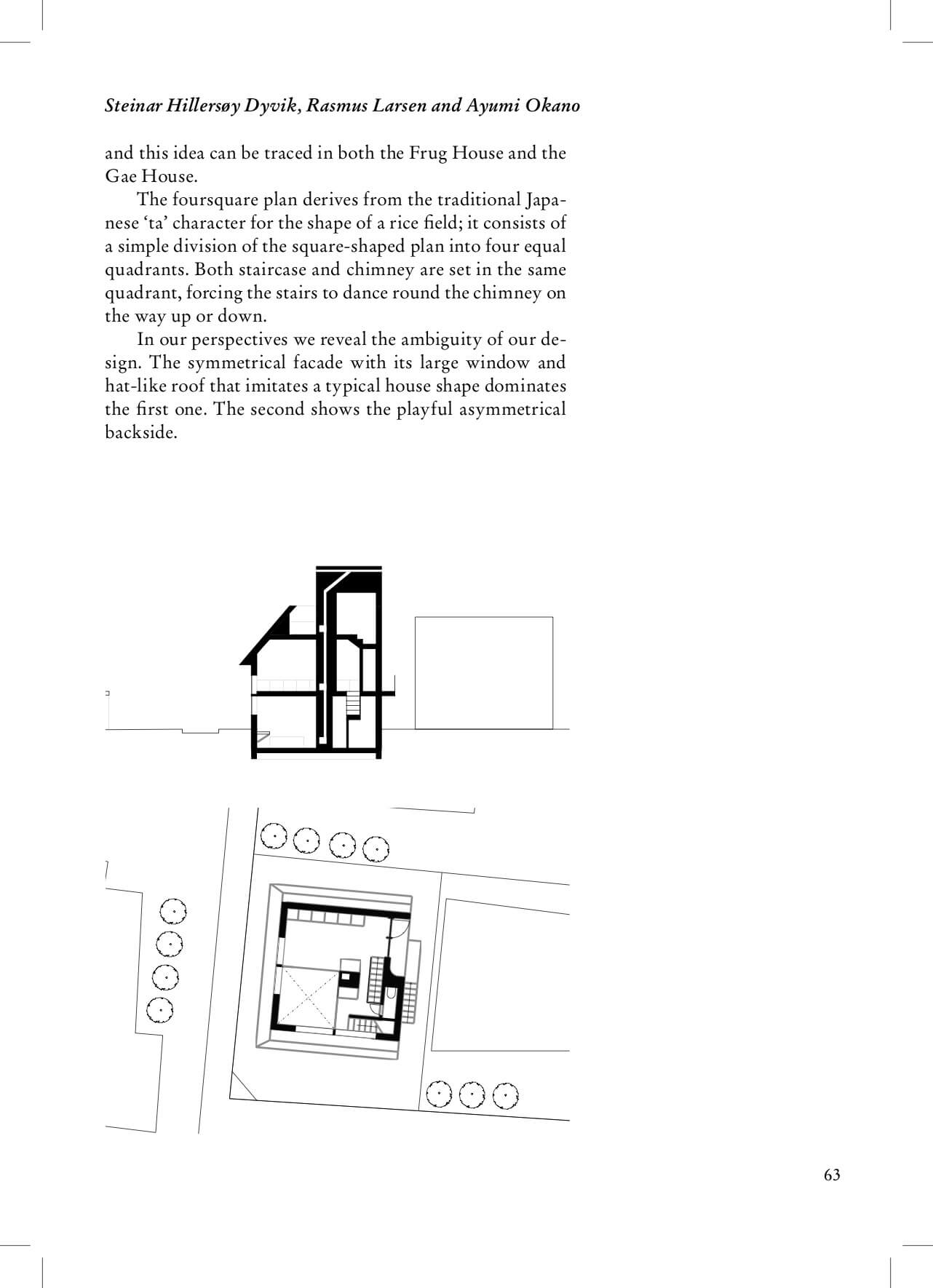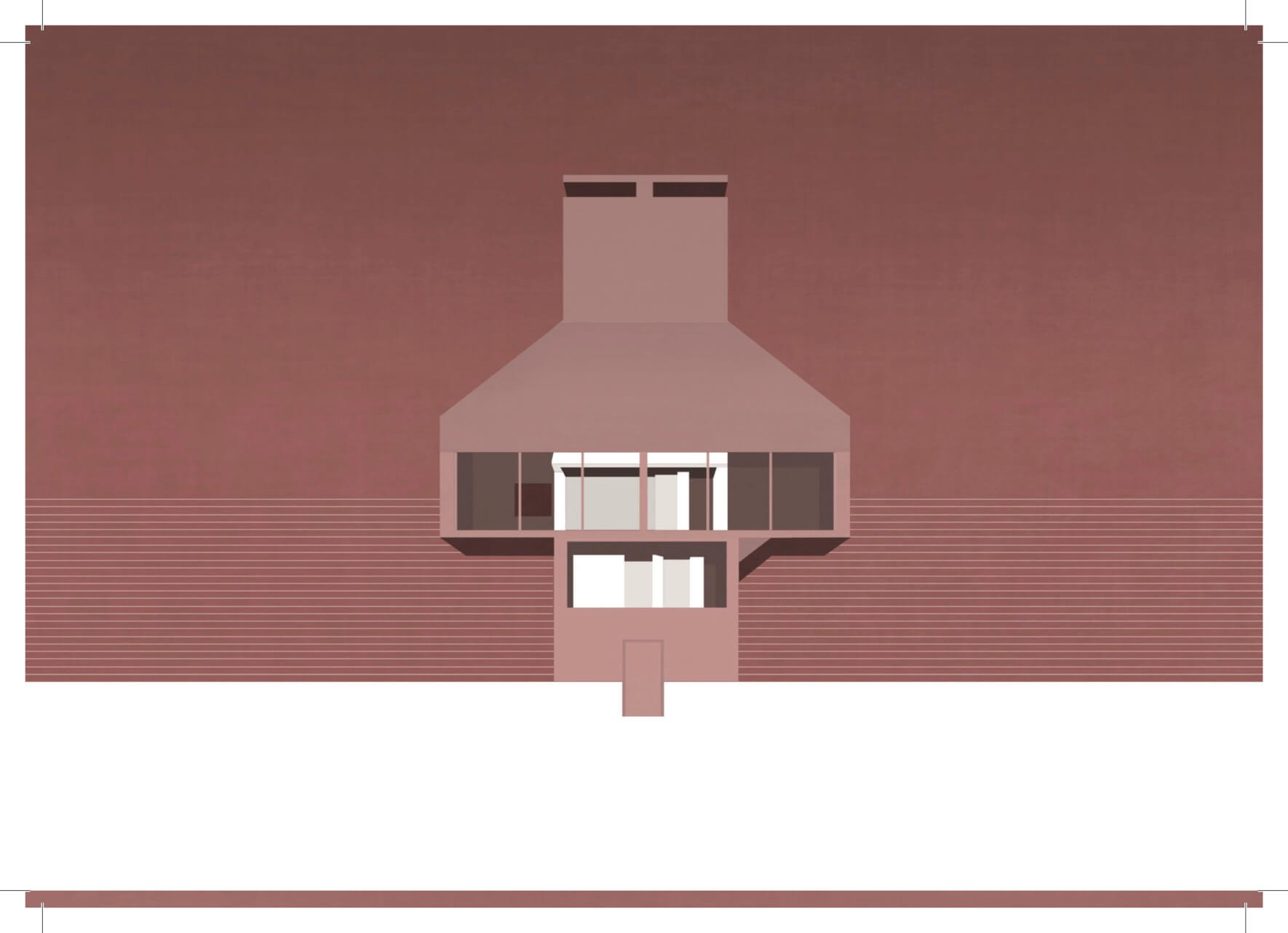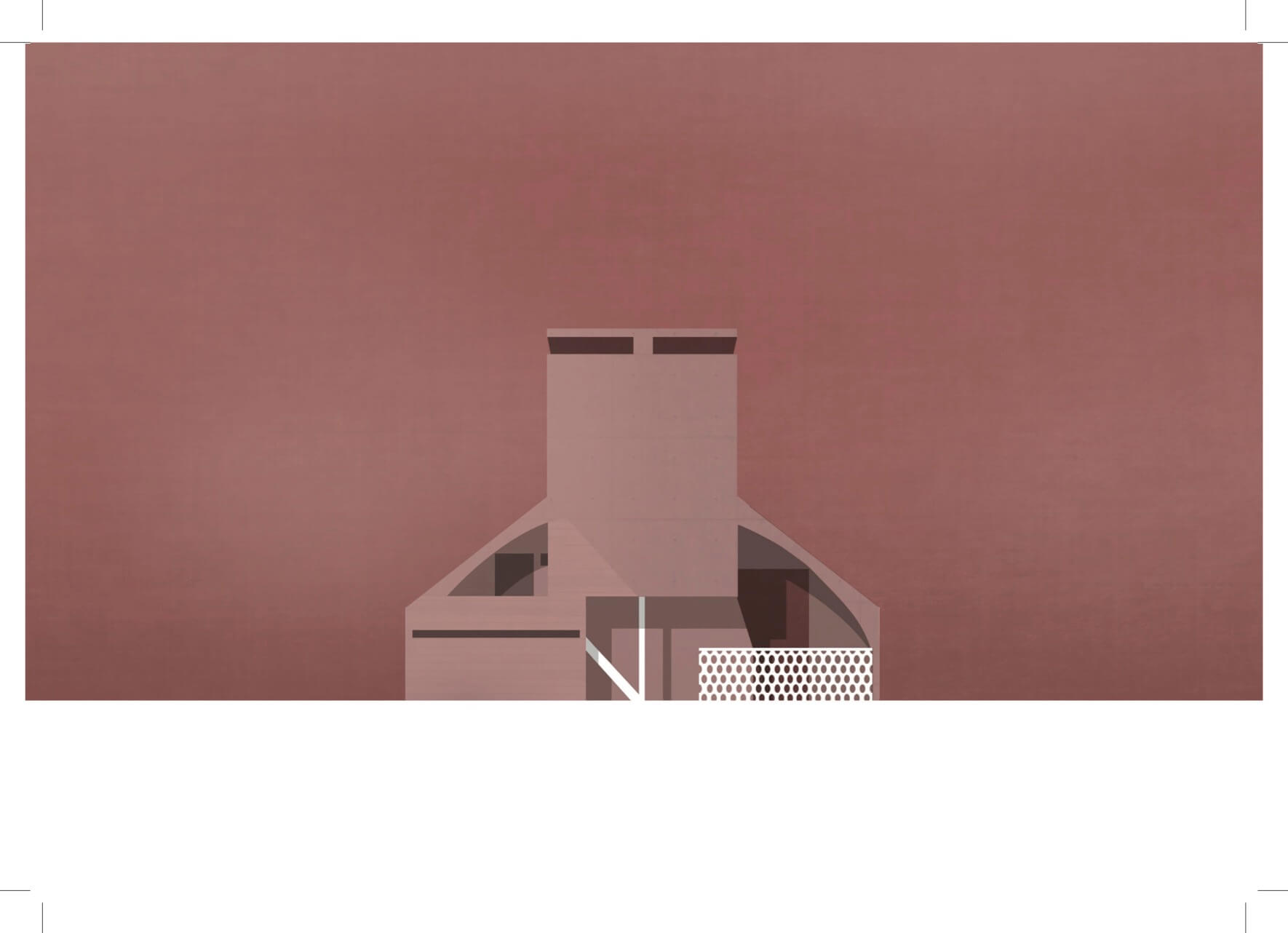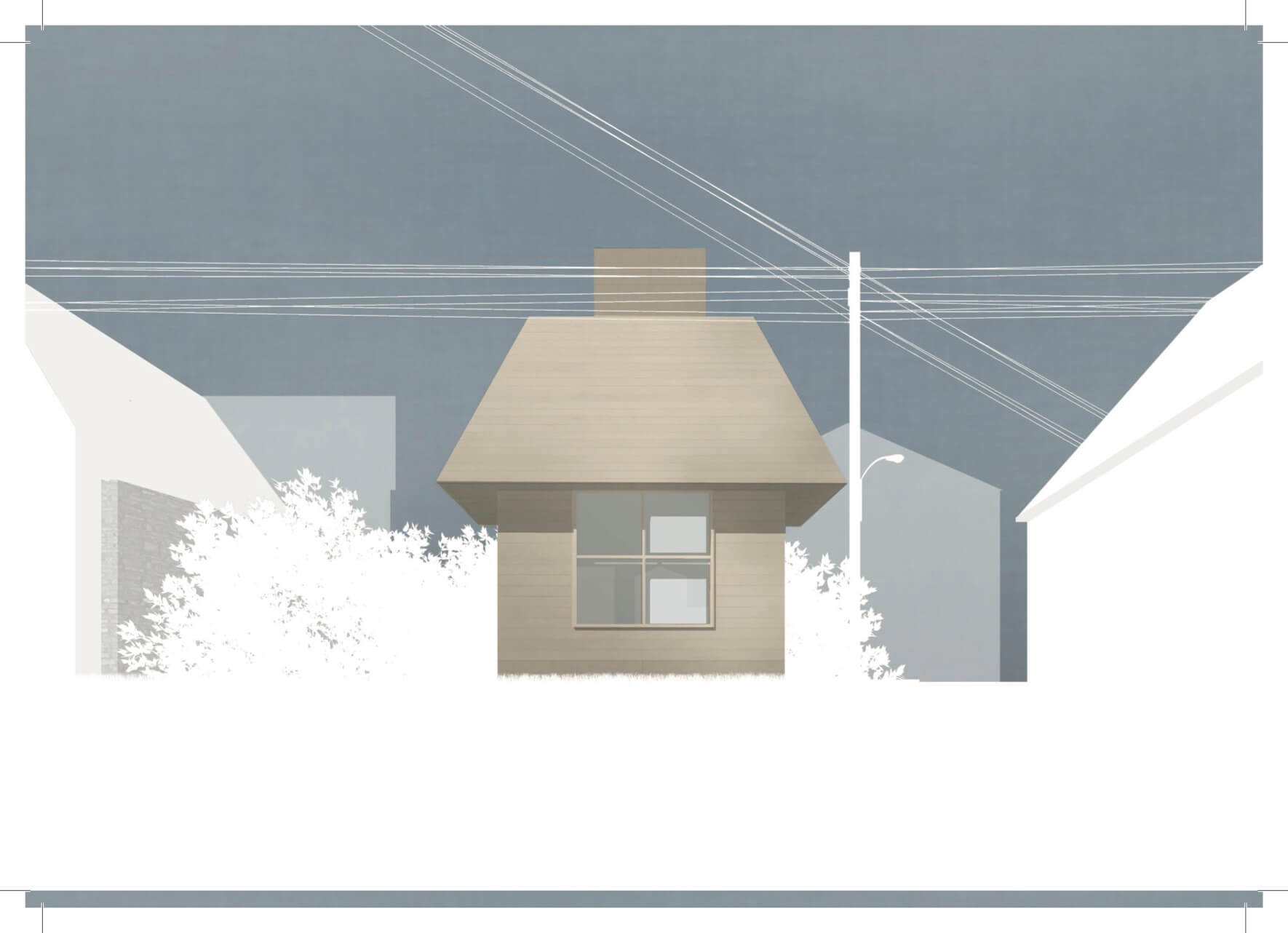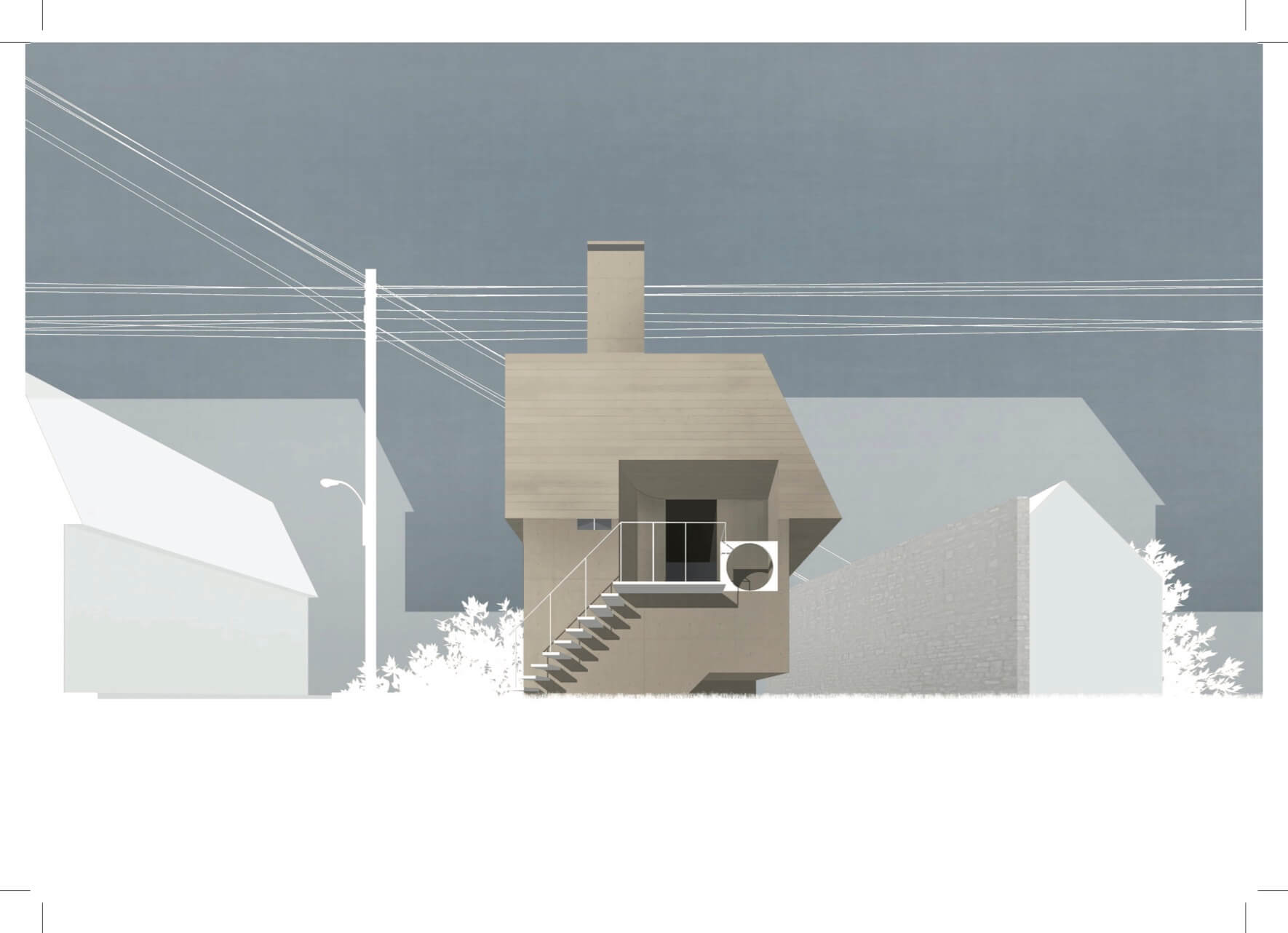Both the Frog House and the Gae House played important roles in shaping our design. Generally speking, these two projects can be respectively described as either a chimney with two facades or else a building with a big roof.
The main concept from the Frug House is its ambiguity, with its two facades, or faces. One on these is symmetrical and open, with large “eyes”, and the other is dug-in and shows the complex interior of the house with its various shapes and materials. Both these faces are emphasized in our perspectives. The chimney is kept because of its important position in the Frug House as well as for the design limitations and possibilities it creates. Our idea of a big roof is connected with Bow-Wow’s Gae House. Here, the roof pitch was determined by local regulations in this mostly residential area. The large-size front window makes the house more difficult to “perceive”, and this idea can be traced in both the Frug House and the Gae House.
The foursquare plan derives from the traditional Japanese “ta” character for the shape of a rice field; it consists of a simple division of the square-shaped plan into four equal quadrants. Both staircase and chimney are set in the same quadrant, forcing the stairs to dance round the chimney on the way up or down.
In our pespectives we reveal the ambiguity of our design. The symmetrical facade with its large window and hat-like roof that imitates a typical house shape dominates the first one. The second shows the playful asymmetrical backside.
